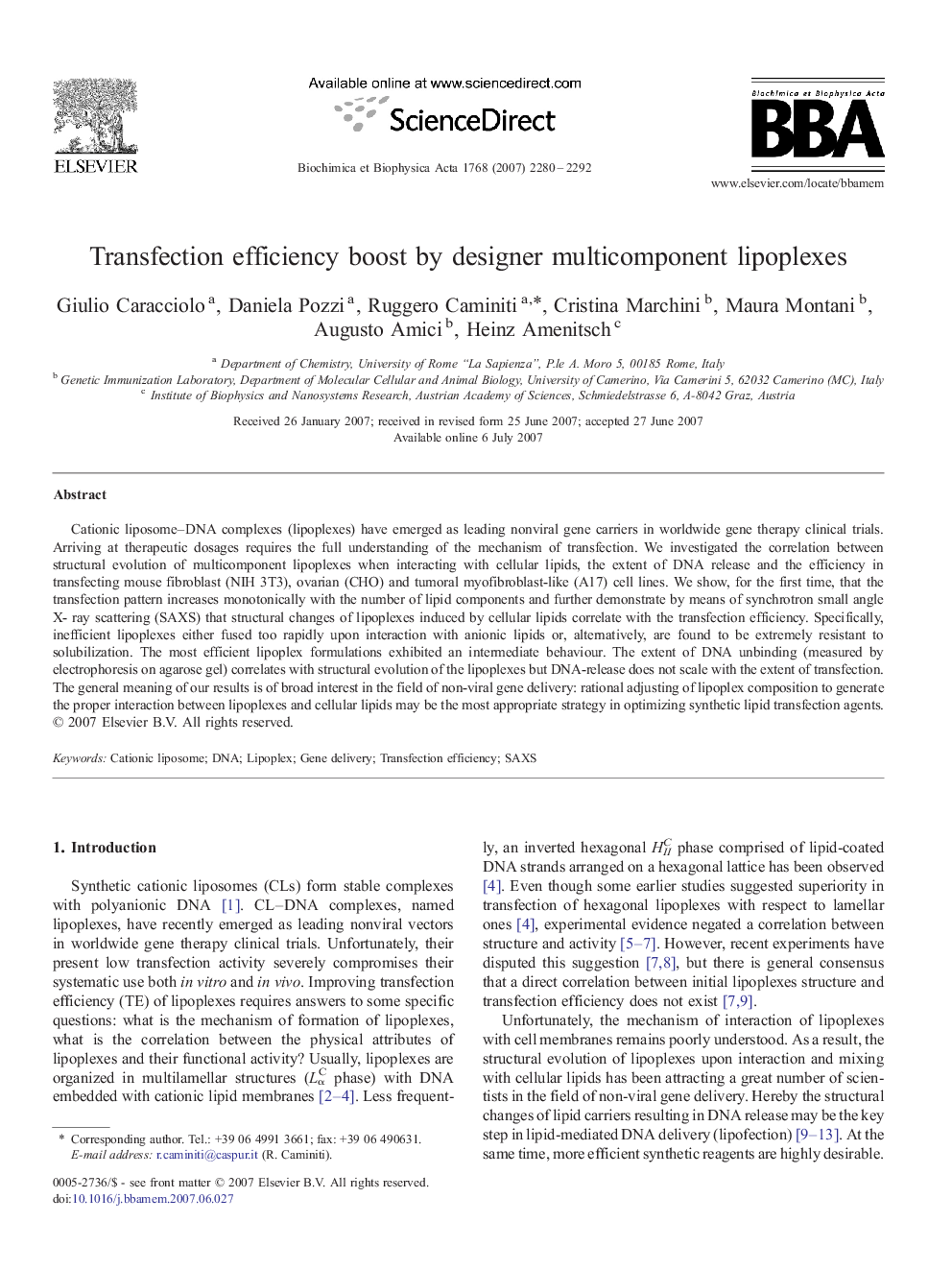| Article ID | Journal | Published Year | Pages | File Type |
|---|---|---|---|---|
| 1945753 | Biochimica et Biophysica Acta (BBA) - Biomembranes | 2007 | 13 Pages |
Cationic liposome–DNA complexes (lipoplexes) have emerged as leading nonviral gene carriers in worldwide gene therapy clinical trials. Arriving at therapeutic dosages requires the full understanding of the mechanism of transfection. We investigated the correlation between structural evolution of multicomponent lipoplexes when interacting with cellular lipids, the extent of DNA release and the efficiency in transfecting mouse fibroblast (NIH 3T3), ovarian (CHO) and tumoral myofibroblast-like (A17) cell lines. We show, for the first time, that the transfection pattern increases monotonically with the number of lipid components and further demonstrate by means of synchrotron small angle X- ray scattering (SAXS) that structural changes of lipoplexes induced by cellular lipids correlate with the transfection efficiency. Specifically, inefficient lipoplexes either fused too rapidly upon interaction with anionic lipids or, alternatively, are found to be extremely resistant to solubilization. The most efficient lipoplex formulations exhibited an intermediate behaviour. The extent of DNA unbinding (measured by electrophoresis on agarose gel) correlates with structural evolution of the lipoplexes but DNA-release does not scale with the extent of transfection. The general meaning of our results is of broad interest in the field of non-viral gene delivery: rational adjusting of lipoplex composition to generate the proper interaction between lipoplexes and cellular lipids may be the most appropriate strategy in optimizing synthetic lipid transfection agents.
